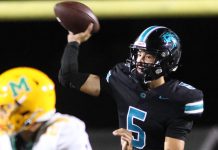Gilroy
– The 10 worst intersections in Gilroy accounted for 422
collisions and 60 injuries over the course of four years, according
to a traffic study city officials released this week.
No traffic fatalities took place in the review period
– from Jan.
Gilroy – The 10 worst intersections in Gilroy accounted for 422 collisions and 60 injuries over the course of four years, according to a traffic study city officials released this week.
No traffic fatalities took place in the review period – from Jan. 2000 to Dec. 2003 – although accidents involved a number of cars hitting bicyclists and pedestrians, according to the study.
The intersection of Leavesley Road and Murray Avenue ranked first in accidents and injuries, at 61 and 10, respectively. The report attributes the high number of rear-end accidents to drivers speeding to and from the U.S. 101 ramps. It recommends permanent radar speed signs and more shoulder space to reduce danger.
Mayor Al Pinheiro, whose insurance and travel business sits on the southeast corner of Church and First streets, wasn’t surprised that the intersection outside his window ranked second highest with 59 collisions.
“I knew for many years that the intersection has its issues with that left-turn lane,” he said, referring to the absence of turning lanes or a turn light off Church St. “There are really no surprises there.”
The top 10 list is part of a larger city-wide traffic study that began last year. Compiling the information took months of work by an independent consultant, who merged state and city traffic records to come up with a unified ranking of trouble spots.
“Any city, any agency, includes a routine look at high-accident locations,” said Steve Fitzsimons, senior traffic engineer with the city’s consultants, TYLIN International. “It’s usually a very strong indicator of where agency resources should be focused in correcting problems.”
The study indicates that local officials efforts to fix problem spots are already paying off.
In the first two years of the study period, 27 accidents took place at Seventh and Monterey streets, the 10th-ranked spot on the list. Since the city upgraded the intersection at the end of 2001, only one collision has taken place at the intersection. A similar drop-off in accident rates took place at Tenth and Chestnut streets, ninth in the rankings, and city officials are planning upgrades to improve safety at Tenth and Monterey streets, which ranked fourth on the list
But fixing the worst intersections may take longer since the state’s limited resources are directed elsewhere.
Of the top 10 sites, only three fall under the city’s jurisdiction, with the remainder under the authority of the state transportation department.
“(The transportation agency) will be looking at their list for the entire Bay Area,” Fitzsimons said. “Their list includes intersections with multiple fatalities. In my mind, the probability of the state doing anything (in Gilroy) without being asked is very low. In reality, the state’s budget is as bad as everywhere else. It’s quite possible that the city’s going to have to collaborate.”
That means the city may have to foot some or all of the bill if it hopes to see any upgrades to its worst intersections in the near future.
“That’s going to be a hard one, the way (the state’s) monetary issues are,” City Administrator Jay Baksa agreed. “It’s going to be tough, and it will be 100 percent political.”
Representatives for the California Department of Transportation could not be reached.
Fitzsimons said Gilroy’s traffic problems are “not uncommon” for semi-rural areas as they become more urban.
“You can’t go out and address everything, and even if you could, you still want to prioritize and pick the worst ones first,” he said. “There are (several) ways of looking at this. One is, has the city been doing its job over the years? I think the answer to that is yes. There’s nothing so alarming here that you wonder why nothing has been done yet.”















